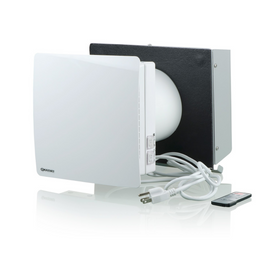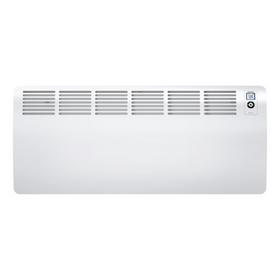
7 Ways To a Healthier, More Efficient, and Money-Saving Home
Last Updated: Feb 11, 2025Too often, sustainability is considered a lifestyle choice that only wealthier people can afford. While the tomatoes at the farmers market sure look tastier and healthier, not everyone can afford to pay $5 dollars a pound for those tomatoes when the supermarket is selling them at $0.75 a pound. Most people might wish that they could lower their monthly energy bill and reduce their household carbon footprint, but installing a $15,000 dollar solar panel system, even with the immediate savings on your monthly electricity bill, might not be financially wise for people struggling to stay on top of their mortgage payment.
Fortunately, as ever more people begin to care deeply about environmental sustainability and their own holistic health, the cost of living a healthy, organic, and environmentally friendly lifestyle is increasingly affordable. While you might not be ready for a complete renovation to turn your home into a carbon zero home, there are several minor renovations and changes that you can make to your home that would not cost you any more than conventional products.
Below, we look at seven household products that cost the same or even less than their conventional counterparts while offering major health benefits and/or sustainability advantages.
Table of Contents
- Recycled Drywall
- Dual Flush Toilets
- Low Flow Plumbing Fixtures
- LEDs
- Energy Star Appliances
- Sustainably Sourced Furniture
- Zero VOC Paint

Recycled Drywall
Drywall is by far the most common type of interior wall used in homes in the United States. Over 15 million tons of new drywall is produced each year by construction manufacturers. When building a new home, almost 12% of the drywall is wasted during the installation process without ever having been used.
Drywall (also known as gypsum board, wallboard, plasterboard, and sheetrock) is made from calcium sulfate dehydrate, a mineral found in ancient sea beds that have since dried up. Because it is a natural material, it can also be easily recycled.
When drywall is disposed of in landfills, it leads to anaerobic decomposition situations where harmful gasses such as hydrogen sulfide are released into the surrounding area. To avoid these problems associated with landfill disposal, the gypsum in drywall can be recycled into new pieces of drywall that maintain that exact same standards and performance while reducing the need to continue to mine new sources of gypsum from around the world.
Recycled drywall costs the same (or even less) than new drywall, and you can find a list of recycled drywall providers here.

Dual Flush Toilets
Older toilets can use up to 7 gallons of water per flush, thus constituting a major source of water expenditure in the home. If you have been considering purchasing a new toilet for your bathroom, dual flush toilets can save you enormous amounts of water. Besides limiting the amount of water per flush, these fixtures also allow you to choose between two flush options: a lower volume flush for liquid waste and a higher volume flush for solid waste. The best part of dual flush toilets is that they don’t cost any more than other types of toilets on the market. One consumer website reports that the average cost of toilets today ranges between $200 and $400, while dual flush toilets can be found for as low as $150.

Low Flow Plumbing Fixtures
Another great (and inexpensive) way to save on the water that your home uses is through installing low flow plumbing fixtures. That leaky faucet in your kitchen might be leading to over 10,000 gallons of water lost per year and is most likely driving you crazy. Low flow plumbing fixtures can save you at least 30% of household water usage. Besides saving you money on your monthly water bill, these fixtures are only a fraction more expensive than conventional faucets, showerheads, toilets, and other plumbing fixtures. You can also add aerators to your existing faucets.

LEDs
While the $0.75 you pay for a 40-watt incandescent light bulb is going to be the cheapest individual bulb on the market no matter where you shop, LED light bulbs are continuing to drop in cost, and you can often find 7 to 10 watt LEDs for under $2 each. The extra dollar you paid for LED bulbs will quickly be paid back. While running a 12-watt LED will only cost you around $1 per year, the same cost for a 60-watt incandescent would be around $5.

Energy Star Appliances
From kitchen appliances to ceiling fans, to lighting fixtures, to washing machines, and TVs, Energy Star is the government back symbol and certification that measures the energy efficiency of a wide range of household appliances and electric devices. Besides consuming much less energy, these devices also help you save money in the short term. For example, you can expect to save around $110 dollars per year by purchasing an Energy Star certified washing machine, and Energy Star refrigerators are at least 9% more energy efficient than their competitors.
Energy Star Appliances and electrical fixtures tend to be about the same cost as conventional appliances. Next time you need to replace anything from a coffee maker to a ceiling fan, make sure to look for the Energy Star certification for quick savings and more household energy efficiency.
Tobias Roberts
Tobias runs an agroecology farm and a natural building collective in the mountains of El Salvador. He specializes in earthen construction methods and uses permaculture design methods to integrate structures into the sustainability of the landscape.












